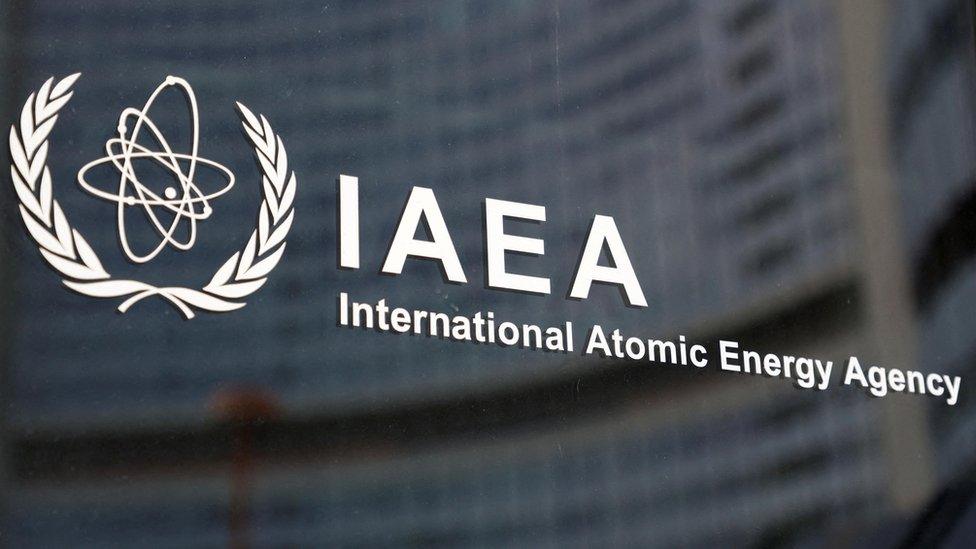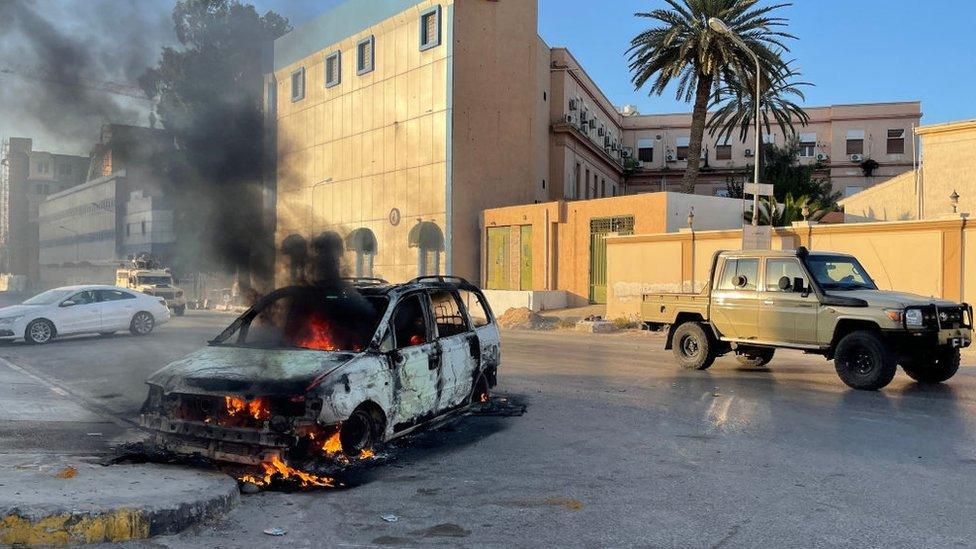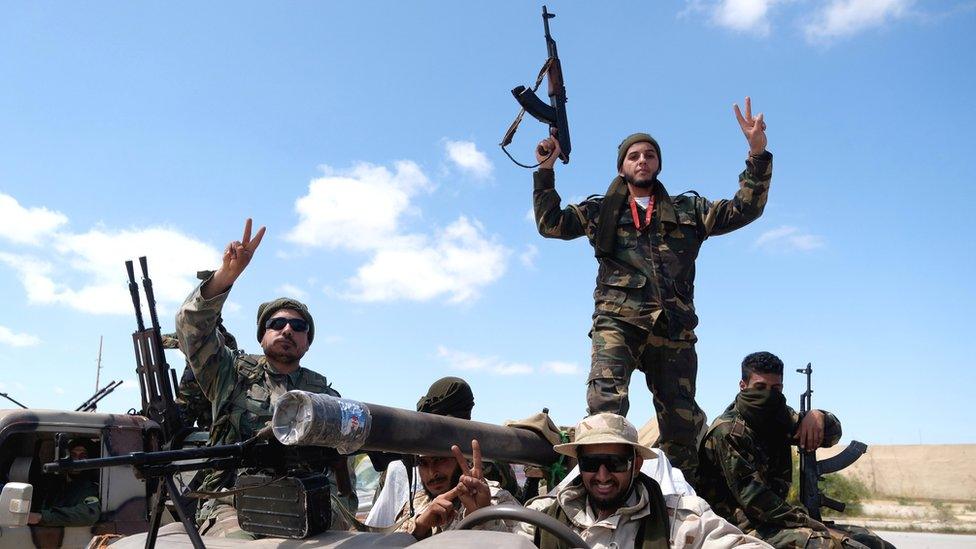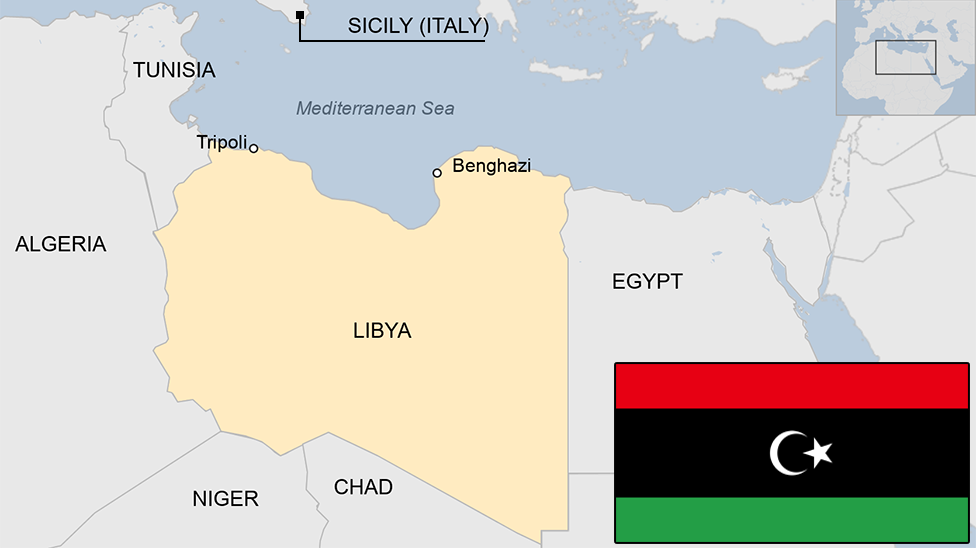Libya uranium: Tonnes gone missing, UN says
- Published

The International Atomic Energy Agency (IAEA) is the UN's nuclear watchdog
Two and a half tonnes of uranium have gone missing from a site in Libya, the UN's nuclear watchdog has said.
The International Atomic Energy Agency (IAEA) sounded the alarm after a visit by its inspectors to the undisclosed site earlier this week.
They found that 10 drums containing uranium ore had disappeared, the IAEA said.
Inspectors fear the uranium could pose a radiological risk, and also have concerns over nuclear security.
The IAEA said that the site where the uranium was stored was not in government-controlled territory.
In a statement, the organisation said it would conduct further activities "to clarify the circumstances of the removal of the nuclear material and its current location".
It is unclear when the uranium went missing or who could have taken it.
It was removed from a very remote location in southern Libya, where there were "lots of ungoverned areas", according to Scott Roecker from the Nuclear Threat Initiative, a global security organisation working on nuclear issues.
"If you're removing this material from this location you must really want it," he told the BBC's Newsday programme, adding that the quantity that appears to have been taken is "approximately one tenth of the amount of material" stored at the facility "so you would absolutely see it missing".
The IAEA told the BBC it was working to clarify what happened, how the nuclear material was removed and where it was now.
Mr Roecker said the material "in its current form [known as yellow cake] cannot be made into a nuclear weapon", although it could be used as "feedstock" - the raw material needed for a nuclear weapons programme.
He also downplayed fears of radiation, noting that "yellow cake doesn't really have any radiation in its current form" and as a result it had been stored in some "pretty rudimentary drums".
Mr Roecker suggested that it could potentially be used for other purposes, such as nuclear energy, but pointed out that countries would normally buy material for that on the open market.
"Perhaps it was stolen by someone who wants to make a profit out of this? There's a lot of scenarios around this," he said.
The IAEA explained that reaching the site had been complicated in recent times.
Inspectors had wanted to visit the location last year, but the trip had to be postponed because of fighting between rival Libyan militias.
In December 2003, Libya publicly renounced nuclear, biological and chemical weapons and agreed to restrict itself to the possession of ballistic missiles with a range of no more than 300 km, external.
But since Libya's former leader Colonel Muammar Gaddafi was deposed in 2011, the country has been divided into competing political and military factions.
It is now split between an interim government in the capital Tripoli and another one in the east led by Gen Khalifa Haftar.
Neither is in control of the south where the uranium was taken from.
Many foreign governments and groups have been vying for influence in Libya since Nato-backed forces overthrew Col Gaddafi. They include Russia's Wagner Group, and Islamic State militants.
The oil-rich country is largely lawless, and has previously been described as an "arms bazaar".
In 2103, UN experts reported that weapons smuggled out of Libya, external were fuelling conflicts in other parts of Africa and the Middle East.
Related topics
- Published28 August 2022

- Published23 January 2020

- Published13 September 2023
